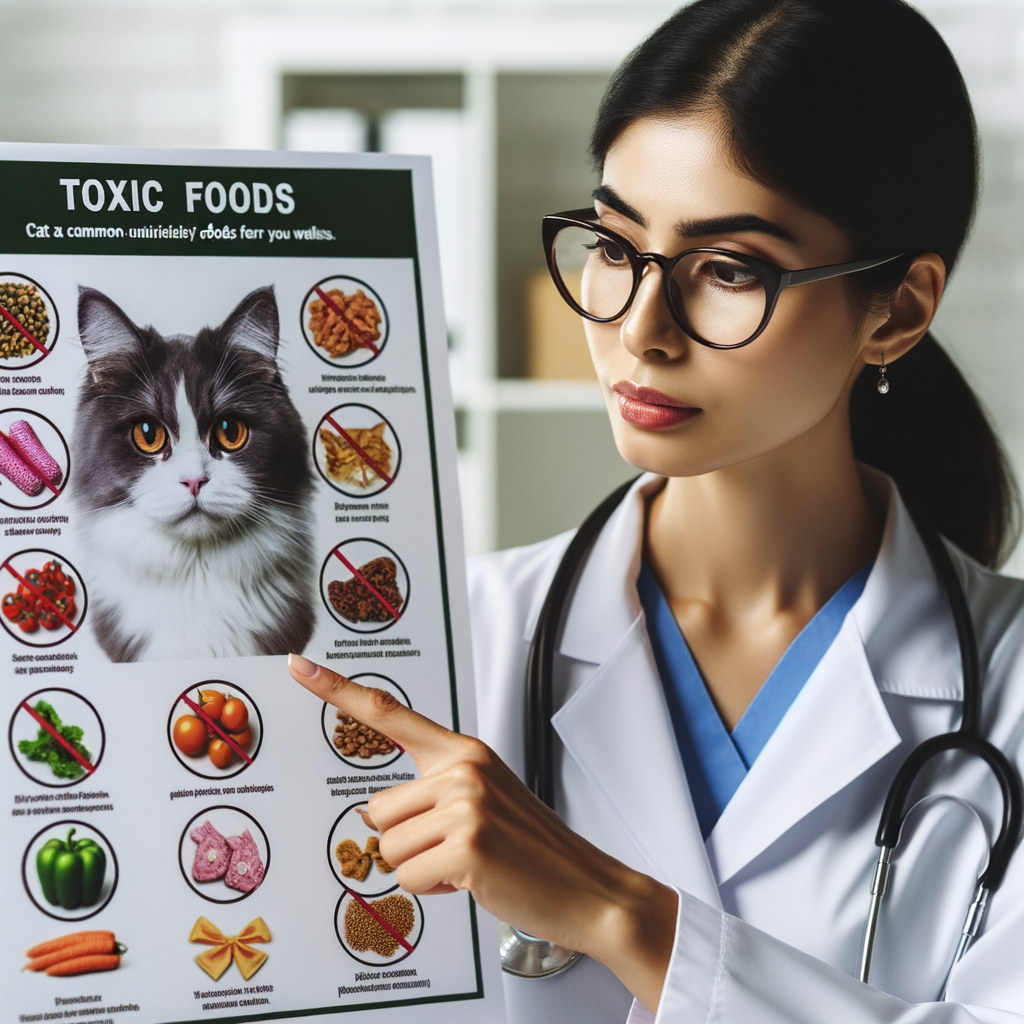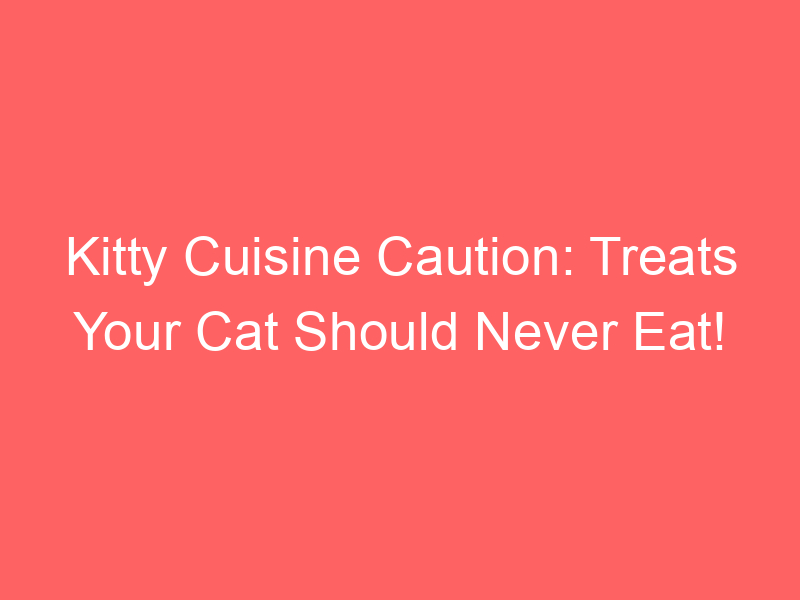
Introduction to Cats Dietary Restrictions
Every cat owner wants their feline friend to be healthy and happy. One of the most crucial factors in achieving this is understanding your cat’s dietary needs and restrictions. In this section, we will delve into the importance of cat nutrition and the role of a balanced diet in maintaining your cat’s health.
- Understanding Cat Nutrition
- Importance of a Balanced Diet for Cat Health
Cats are obligate carnivores, which means they require a diet primarily made up of meat. They need certain nutrients, like taurine and arachidonic acid, which are only found in animal tissues. Cats also require a higher level of protein compared to dogs. Understanding these unique dietary needs is the first step towards ensuring your cat’s health and longevity.
A balanced diet is not just about feeding your cat meat. It’s about providing all the nutrients your cat needs in the right proportions. This includes proteins, fats, carbohydrates, vitamins, and minerals. A balanced diet helps maintain a healthy weight, supports the immune system, promotes good digestive health, and contributes to a shiny coat and healthy skin. Feeding your cat a balanced diet can help prevent a variety of health issues, including obesity, diabetes, and heart disease.
In the following sections, we will discuss dangerous treats to avoid, take a closer look at toxic foods for cats, and provide guidelines to ensure your cat’s health through proper diet. Remember, your cat’s nutrition should be a priority. After all, a healthy cat is a happy cat!
Dangerous Treats for Cats: What to Avoid
As a cat owner, it’s important to know that not all foods safe for humans are safe for our feline friends. There are certain common household foods that can be harmful, or even deadly, to cats. Here, we’ll discuss some of these dangerous treats that you should avoid giving to your cat.
Common Household Foods Cats Should Avoid
While it may be tempting to share your meal with your furry friend, some foods can cause serious health problems for cats. Here are four common household foods that are dangerous for cats:
- Onions and Garlic: These common kitchen ingredients can cause anemia in cats. Even a small amount can lead to red blood cell damage. Symptoms of anemia in cats include weakness, pale gums, and breathlessness.
- Chocolate: Chocolate contains theobromine, a substance that is toxic to cats. Even a small piece of chocolate can cause heart problems, seizures, and in severe cases, death.
- Alcohol: Alcohol has a much more potent effect on cats than it does on humans. Just a small sip can lead to serious health problems, including damage to the liver and brain.
- Caffeine: Caffeine is also toxic to cats. It can cause rapid breathing, heart palpitations, and muscle tremors. This includes coffee, tea, and energy drinks.
Remember, these are just a few examples of the many foods that can be harmful to cats. Always check with your vet before introducing a new food into your cat’s diet. It’s always better to be safe than sorry when it comes to your cat’s health.
Unhealthy Cat Treats: Store-Bought Items to Be Wary Of
As a cat owner, it’s essential to be aware of the treats that may pose a risk to your feline friend’s health. While many store-bought treats are marketed as delicious and nutritious, some can be harmful. Let’s take a closer look at a couple of these items.
- Some Seafood-Flavored Treats
It might surprise you, but not all seafood-flavored treats are good for your cat. While cats are known for their love of fish, some of these treats contain artificial flavors and preservatives that can lead to health issues. For instance, a study found that 10% of cats developed urinary problems due to a diet high in fish-flavored food. Therefore, it’s crucial to check the ingredients list and opt for treats with natural flavors.
- Certain Dairy Products
Many people believe that cats love milk and other dairy products. However, the truth is that many cats are lactose intolerant. This means that they can’t digest lactose, a sugar found in milk and other dairy products. Feeding your cat these treats can lead to digestive problems like diarrhea and stomach upset. In fact, according to a survey, 65% of adult cats have some degree of lactose intolerance. So, it’s best to avoid dairy-based treats unless they’re specially formulated for cats.
| Treat Type | Potential Health Issue |
|---|---|
| Seafood-Flavored Treats | Urinary Problems |
| Dairy Products | Stomach Upset and Diarrhea |
In conclusion, it’s important to be mindful of the treats you give your cat. Always read the ingredients list and understand what’s suitable for your feline friend. Remember, your cat’s health should always be a top priority.
Toxic Foods for Cats: A Closer Look
It’s important to know that not all foods that are safe for humans are safe for cats. Some foods can be toxic and even deadly to our feline friends. Let’s take a closer look at why these foods are harmful to cats.
Why These Foods Are Harmful for Cats
Just like humans, cats have a digestive system that breaks down the food they eat. However, their bodies process certain foods differently than ours. Some foods contain substances that are toxic to cats and can cause serious health problems.
- Effects of toxic foods on cat’s health
- Case study: The aftermath of a cat consuming a toxic food
When a cat consumes a food that is toxic to them, it can cause a variety of health problems. These can range from mild symptoms like upset stomach and diarrhea, to more serious conditions like kidney failure and even death. For example, onions and garlic contain a substance that can damage a cat’s red blood cells, leading to a condition called hemolytic anemia. Chocolate contains theobromine, which can cause heart problems in cats.
Let’s consider a real-life example. A cat named Whiskers was rushed to the vet after consuming a small piece of chocolate cake. Whiskers experienced symptoms like rapid breathing, irregular heartbeat, and seizures. The vet diagnosed Whiskers with theobromine poisoning, a condition caused by consuming chocolate. After receiving treatment, Whiskers recovered, but the incident serves as a reminder of the dangers of feeding cats toxic foods.
In conclusion, it’s crucial to be aware of the foods that are toxic to cats and to keep these foods out of their reach. Always consult with your vet before introducing new foods into your cat’s diet.
Cat Diet Guidelines: Ensuring Your Cat’s Health
As a cat owner, it’s crucial to understand what foods are safe for your feline friend. Let’s explore some healthy alternatives to foods that are typically off-limits for cats.
Healthy Alternatives to No-No Foods for Cats
While cats are known for their love of fish and meat, there are also several vegetables and human foods that they can safely consume. Here are some of them:
- Vegetables cats can safely eat: Not all vegetables are safe for cats, but some can be a healthy addition to their diet. These include cooked carrots, peas, and green beans. These veggies are low in calories and high in fiber, making them a good choice for overweight cats. However, remember to serve these in moderation and always cooked, as raw vegetables can be hard for cats to digest.
- Safe human foods for cats: Apart from vegetables, there are other human foods that cats can safely eat. Cooked poultry like chicken or turkey can be a great source of protein for cats. Fish like salmon and tuna can also be given, but in moderation due to their high fat content. Eggs are another safe option, but they should always be cooked to avoid any risk of salmonella.
Remember, while these foods are safe for cats, they should not replace a balanced cat diet. Always consult your vet before making any major changes to your cat’s diet.
How to Implement a Healthy Diet for Your Cat
Ensuring your cat’s health involves more than just avoiding harmful foods. It also includes implementing a healthy diet. Here are three key steps to help you do just that:
- Gradually introducing new foods
- Monitoring your cat’s reaction to new foods
- Consulting with a vet for personalized diet plans
When it comes to changing your cat’s diet, slow and steady wins the race. Cats are creatures of habit and sudden changes can upset their stomachs. Start by mixing a small amount of the new food with their current food. Gradually increase the proportion of the new food over the course of a week. This will allow your cat’s digestive system to adjust.
Keep a close eye on your cat after introducing new foods. Look for changes in their behavior, appetite, and litter box habits. If your cat shows signs of discomfort, such as vomiting or diarrhea, it might be a reaction to the new food. In such cases, it’s best to revert back to the old diet and consult with a vet.
Every cat is unique and what works for one might not work for another. Therefore, it’s always a good idea to consult with a vet before making any major changes to your cat’s diet. A vet can provide a personalized diet plan based on your cat’s age, weight, and health condition.
In conclusion, implementing a healthy diet for your cat requires patience, observation, and professional advice. Remember, a healthy cat is a happy cat!
Conclusion: Prioritizing Your Cat’s Nutrition
As we reach the end of our discussion on cat nutrition, it is clear that the food choices we make for our feline friends are of paramount importance. The health and longevity of your cat largely depend on the quality and appropriateness of their diet. Let’s recap the key points we’ve learned about harmful foods for cats and the importance of vigilance in maintaining your cat’s diet.
- Key takeaways on harmful foods for cats
There are several foods that are toxic to cats and should be avoided at all costs. These include chocolate, onions, garlic, alcohol, caffeine, and certain fruits like grapes and raisins. Even some foods that are healthy for humans, like avocados and dairy products, can cause severe health issues in cats. It’s essential to be aware of these harmful foods and ensure they are not included in your cat’s diet.
- Importance of vigilance in maintaining your cat’s diet
Being vigilant about your cat’s diet is not just about avoiding harmful foods. It’s also about providing a balanced diet that meets all their nutritional needs. This includes a mix of proteins, fats, and carbohydrates, as well as essential vitamins and minerals. Regular vet check-ups can help monitor your cat’s health and adjust their diet as needed.
Remember, every cat is unique and may have different dietary needs. What works for one cat may not work for another. Therefore, it’s important to understand your cat’s individual needs and consult with a vet to create the best diet plan.
In conclusion, prioritizing your cat’s nutrition is one of the most important responsibilities as a cat owner. By being aware of harmful foods and maintaining a balanced diet, you can ensure your cat lives a long, healthy, and happy life.








